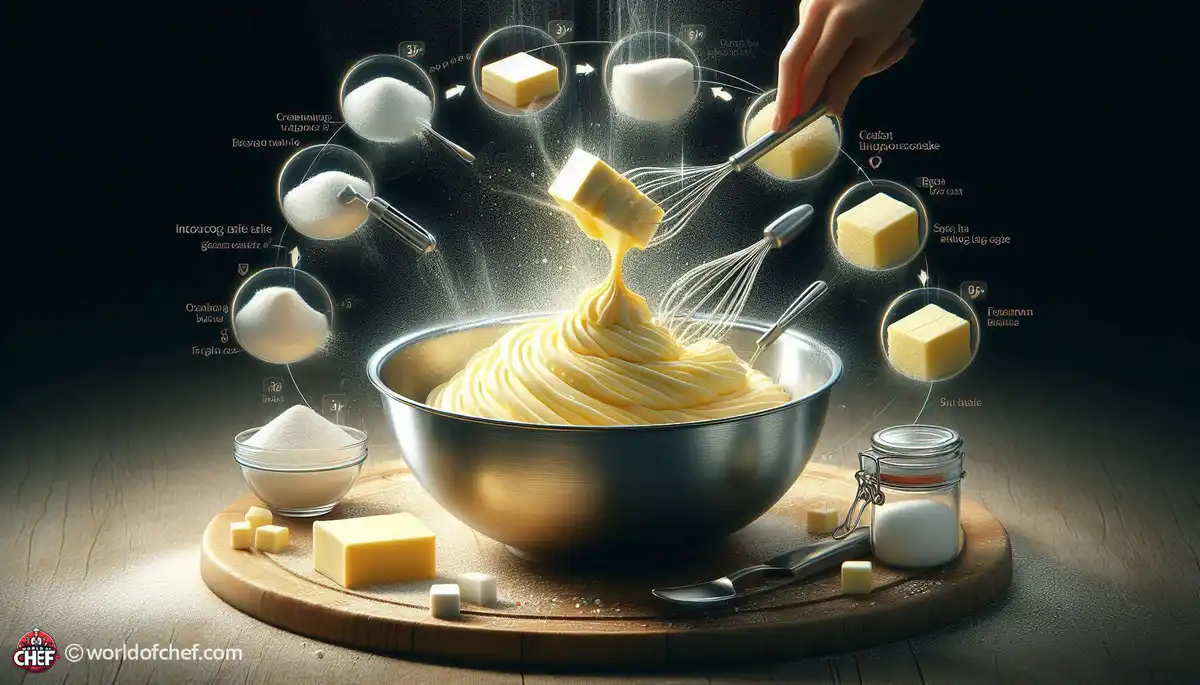
Simmering with Spices: Infusing Flavor into Your Dishes
Emery Donley - Oct 8, 2024 - 8 min read


There is always a secret technique at the heart of a perfect cake: the creaming method. This fundamental process involves blending together softened butter and sugar until the mixture becomes light and fluffy, creating a base that serves as the foundation for countless cake recipes. But what exactly makes the creaming method so essential in the world of baking?
One of the major reasons why creaming is a must in cake preparation is that it provides the best possible texture. When butter and sugar are creamed, tiny air bubbles become mixed into the mixture. Such a batter is lighter and airier, which would provide the right texture to bake moist and tender cakes with delicate crumbs that almost melt in your mouth. Without proper creaming, the cakes turn out to be dense and heavy and may not contain the right amount of fluffiness we expect with a slice of cake.
Creaming does not only provide texture in cakes; it also works to develop flavors in baked goods. As butter and sugar are beaten together, friction breaks the sugar crystals down to their purest state and their natural sweetness, and creates a smooth creamy base. In addition to the contribution it makes towards sweetness, it also assists in developing complex flavors since it caramelizes the sugars while being baked. This results in a cake that is not only sublime in flavor but also richly flavored with an almost complex depth of flavor, beckoning you to come back again and again.
To perfect the creaming method, start with the right ingredients. Use softened butter at room temperature-it will cream much easier with sugar, for one thing. And while using great-quality ingredients is important-the freshest butter and fine granulated sugar, in this case-you should avoid margarine or spreads that contain added water and oils, which will affect the texture and flavor of your cake.
Proper mixing is the most appropriate in butter and sugar creams. Take the softened butter and beat it alone to become soft and creamy first. Gradually add some sugar little by little but keeping on beating the mixture constantly when it will be light or flaky. Scrape the sides of the bowl periodically in order to ensure that everything is well mixed. Try not to overmix at this stage, as overmixing makes the butter too warm and the resulting cake will be dense.
Once the butter and sugar have been creamed together, it is time to add eggs and any flavorings which the recipe may specify. This also ensures that the eggs are added one at a time and that they emulsify properly into the mixture to yield a smooth, uniform batter. Be sure to mix well each egg into the mixture before adding the next egg. If the mixture looks curdled or separated, you add a tablespoon of flour to stabilize it. Add all other flavorings such as vanilla extract or citrus zest to really give the cake a wonderful taste.
One of the advantages of the creaming method is that it produces results consistently, time and again. Because the process of Creaming Butter and sugar together, then adding other ingredients, is standardized, bakers can be certain that their cakes will come out perfectly every time. This predictability makes the creaming method a favorite among professional bakers and home cooks alike, providing a foolproof way to achieve bakery-quality results in the comfort of your own kitchen.
The creaming method also provides diversity in all kinds of cake recipes. You can easily use it to make either a simple vanilla cake, an intensive Chocolate Cake, or a tangy lemon cake due to its versatility for all Flavor Profiles and kinds of baking. This way, the bakers could create infinite varieties of cake recipes, depending on their taste and imagination, trying different flavors, textures, and decorations.
Not only does the creaming method create light and airy cakes, but it also ensures stability and structure to the final product. During the creaming process, tiny pockets of leavening are incorporated into the batter in the form of air bubbles, which make the cake rise evenly when baking. This results in a cake that has an even texture and balance; its tender crumb holds beautifully, with stability that the creaming method gives to it, and therefore makes it easier to cut and decorate the cakes with an immaculate presentation for service.
Baking creaming is one of the fundamental skills that bakers need to master as they pursue their baking journey. By understanding the basics of this fundamental technique and mixing properly and incorporating the method, you will unlock its secrets to creating light, fluffy, and delicious cakes for sure. So the next time you are in the mood for a homemade treat remember to reach for your mixer and a stick of butter and let the creaming magic work in your kitchen.

Emery Donley - Oct 8, 2024 - 8 min read

Russell Comeaux - Oct 8, 2024 - 8 min read

Walter Backus - Oct 7, 2024 - 8 min read

Samantha Thames - Oct 7, 2024 - 6 min read